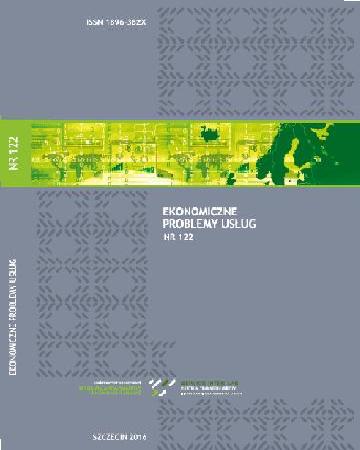
ISSN: 1896-382X
eISSN: 2353-2866
OAI
DOI: 10.18276/epu.2018.131/2-17



Issue archive /
nr 131 (2) 2018
Sukces technologii zbliżeniowej w bankowości na przykładzie rozwoju polskiego rynku kart płatniczych
(THE SUCCESS OF CONTACTLESS TECHNOLOGY IN BANKING – THE EXAMPLE OF THE POLISH PAYMENT CARDS MARKET)
| Authors: |
Michał
Polasik
Uniwersytet Mikołaja Kopernika w Toruniu Anna Iwona Piotrowska Państwowa Wyższa Szkoła Zawodowa we Włocławku |
| Keywords: | karty zbliżeniowe system płatniczy innowacje bankowe |
| Data publikacji całości: | 2018-05-12 |
| Page range: | 9 (177-185) |
| Klasyfikacja JEL: | E42 G21 O33 |
Abstract
The contactless technology has become in Poland a standard for retail payments in a relatively short time. The aim of the article is to indicate the success factors for the development of contactless payments in Poland. Due to the network nature of the payment services and a complexity of payment card schemes functioning, there are huge barriers to technological changes on the payment card market. The success of the contactless technology implementation was achieved by strategy of payment organizations, based on the simultaneous supporting the development of the acceptance network and card issuance. As a result, the Polish banking sector gained advantages of backwardness in the scope of migration to the EMV standard, becoming the leader of this innovation in Europe
Download file
Article file
Bibliography
| 1. | ECB (2014). Card payments in Europe – A renewed focus on SEPA for cards. Frankfurt am Main: Eurosystem. |
| 2. | Economides, N. (1993). Network economics with application to finance. Financial Markets, Institutions & Instruments, 2 (5), 89–97. |
| 3. | Górka, J. (2016). Ewolucja funkcjonalna mobilnego portfela. W: P. Bolibok, M. Żukowski (red.), Obrót bezgotówkowy w Polsce: stan obecny i perspektywy (s. 119–130). Lublin: Wydawnictwo KUL. |
| 4. | Hancke, G. (2008). RFID and Contactless Technology. W: Smart Cards, Tokens, and Security Applications. New York: Springer US. |
| 5. | Morosan, C., DeFranco, A. (2016). It’s about time: Revisiting UTAUT2 to examine consumers’ intentions to use NFC mobile payments in hotels. International Journal of Hospitality Management, 53, 17–29. DOI: 10.1016/j.ijhm.2015.11.003. |
| 6. | Polasik, M. (2014). Perspektywy rozwoju mobilnych płatności NFC na rynku polskim. Annales UMCS. Sectio H Oeconomia, XLVIII (4), 197–207. DOI: 10.17951/h.2014.48.4.197. |
| 7. | Polasik, M., Górka, J., Wilczewski, G., Kunkowski, J., Przenajkowska, K., Tetkowska, N. (2013). Time efficiency of Point-of-Sale payment methods: Empirical results for cash, cards and mobile payments. W: J. Cordeiro, L.A. Maciaszek, J. Filipe (red.), Lecture Notes in Business Information Processing (vol. 141, s. 306–320). Heidelberg: Springer. DOI: 10.1007/978-3-642-40654-6_19. |
| 8. | Polasik, M., Piotrowski, D. (2016). Payment innovations in Poland: A new approach of the banking sector to introducing payment solutions. Economics and Law, 15 (1), 103–131. DOI: 10.12775/EiP.2016.007. |
| 9. | Polasik, M., Wisniewski, T.P., Lightfoot, G. (2012). Modelling customers’ intentions to use contactless cards. International Journal of Banking, Accounting and Finance, 4 (3), 203–231. DOI: 10.1504/IJBAAF.2012.051590. |
| 10. | Rae, C. (2005). MasterCard and Visa agree contactless payments protocol. Card Technology Today, 4 (17), 4. |
| 11. | Rindermann, H. (2018). Cognitive Capitalism: Human Capital and the Wellbeing of Nations. Cambridge: Cambridge University Press. |
| 12. | Rochet, J.-C., Tirole, J. (2003). Platform competition in two-sided markets. Journal of the European Economic Association, 1 (4), 990–1029. DOI: 10.1162/154247603322493212. |
| 13. | Rogers, E.M. (1983). Diffusion of Innovations (3rd ed.). New York: Free Press. |
| 14. | System płatniczy (2017). Warszawa: Narodowy Bank Polski. Pobrane z: http://www.nbp.pl. |
| 15. | Van Hove, L. (2016). Metcalfe’s Law and network quality: An extension of Zhang et al. Journal of Computer Science and Technology, 31 (1), 117–123. DOI: 10.1007/s11390-016-1615-9. |